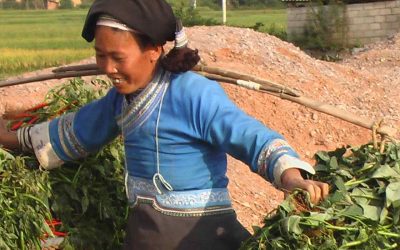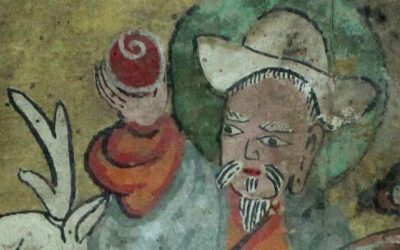Mao Dun’s Spring Silkworms-A must read
In short: A set of stories of exacerbated realism by one of the finest pens of 20th century Chinese literature, which no one should miss in order to understand both the literature and the life and history of contemporary China.
After my disappointment in recent days with Mao Dun’s «Midnight», I have reread the short stories and novellas collected under the title «Spring Silkworms and other stories». I had already read the book 20 or 25 years ago, and when I took it in my hands again I knew that I was facing some hard stories in which the suffering of his characters is described with an almost mathematical precision, the causes of the same are chained in a concatenation of events and policies that only result in ruin, disaster, hunger, suffering.
The corrupt policies of the Kuomintang government, the Japanese invasion, usurious loans, with monthly interest, taxes, political and natural calamities, all play against the common people, always the losers. And although Mao Dun almost always leaves the reader on the brink of the disaster, when it already seems inevitable, and strives to make the protagonists of his stories the families or characters who are not the ones who are suffering the most from historical and political circumstances that condemn millions of people to hunger and misfortune, the reader ends each of the stories with a heavy heart.
Each of these stories is a masterpiece. The descriptions of family decadences encompass a broad geographical, economic, labor and social spectrum, as if the author in writing them and the publisher in putting them together in this volume wanted to show a reality of Leo Tolstoy’s phrase: «All families are alike in happiness, each is different in its misfortune.»
And one of the fascinating aspects of the work is that it shows how misfortune affects anyone, changing their life prospects overnight, sometimes in the midst of disbelief, like Mr. Li from «Wartime,» or Miss Lin from «The Lin Family Store.» As if the first blows of a fortune that is going to become increasingly adverse will be met with the disbelief of those who live their normal lives.
Precisely these two stories, along with those that tell us about the atmosphere in the village of Old Tong Bao, shaken first by the falling prices of silk cocoons and then of rice, are the most elaborate. And while the first two tell us about a misfortune that we could call conjunctural, a war in «Times of War» or a complex political and economic moment in «The Lin Family Store», the second ones tell us about a system that cannot be maintained any longer, as it leaves the peasants continually on the edge of the abyss of misery.
In short, we find ourselves with a set of stories that no one should miss to understand both literature and the life and history of the first half of the twentieth century in China.
Mao Dun. Spring Silkworms and other stories. Translated by Sydney Shapiro. Foreign Language Press. Beijing. 1979.
Cite this article as: Ceinos-Arcones, Pedro, «The first description of the Religion of the Yi,» in Ethnic China, 21 marzo 2021, https://ethnic-china.com/the-first-description-of-the-religion-of-the-yi/.
Last posts
The Landing Yao Ancestral Festival of July
The Landing Yao Ancestral Festival of July All around China, the seventh month of the lunar calendar is known as the month of the ghosts, because in this month is celebrated the Mid-Year Festival. The Mid-Year Festival has nowadays many variations and it includes a...
We are lucky- A list of free books about the Zhuang
Free books about the Zhuang Fortunately for the lovers of the Zhuang nationality culture and language, there are some books, freely available to all the interested readers. Here, there is a list of the books we know are in this moment free to read and/or download....
The world of Naxi nationality Dongba deities
The Naxi people believe that every object, animal, plant, or natural phenomena has its own spirit. In the Dongba scriptures more than 2,400 spirits can be found. The sky, earth, sun, moon, mountains, water, wind, and even stones are all believed to be animate and...
The Bulang, aborigines of Yunnan
The Bulang are one of the oldest populations in the Southwest of Yunnan Province. They are considered one of the aboriginal inhabitants of this province, where they could have lived for more than two thousand years. They inhabit this mountainous region that forms the...
To marry a goddess in Yunnan (Jinuo nationality)
Pedro Ceinos-Arcones. China's last but one matriarchy: The Jino of Yunnan. 2018 Jinuos’ main religious specialists are bailabao, mopei and zhalai or Blacksmith. The oldest man of the main clan in the village is called zhuoba or mother of the village; the oldest of the...
Childbirth in Naxi culture
The rituals performed at birth suggest that in the Naxi traditional thought the entering of the Sv life god in a person is a gradual process developed during the last term of pregnancy and the first days of life, and that this process is considered complete in a first...










